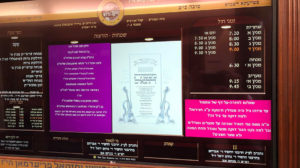A Girl’s Guide to Car Care

I sat down with Yussie, who gave me a rundown on what women — and men! — should know about car maintenance

Like any proper woman, I made my husband do all the car maintenance/mechanic related stuff. But then our schedules changed and switching cars to do a simple oil change was getting ridiculous. I told myself, “Grow up, woman!” My husband gave our mechanic a kind heads-up before I brought the car in the next time so I wouldn’t feel so uncomfortable.
Turns out my mechanic, Yussie Becker of Titan Service Center, is a really nice guy who has patience for all my hand-wringing questions and uncertainties, so now going to the mechanic is as easy as rolling my eyes (I do that a lot). But since most people aren’t as privileged as me, I sat down with Yussie, who gave me a rundown on what women — and men! — should know about car maintenance.
Tires - Do’s and Don’ts
- Do properly inflate your tires (aka tire pressure)
- Do make sure they’re properly aligned
- Do make sure they have good tread
- Do rotate them every five to nine thousand miles (depending on the car)
- Don’t buy used tires
Brakes stop the wheels, but friction stops the car, and the friction you need depends on your tires. Don’t dwell on that too long because it might scare you when you realize how little you know about tires.
Tires — The Good Inflation
Proper inflation will ensure that your car gets both the best MPG (miles per gallon) and the most mileage out of your tires. Also, that you don’t have a blowout, and that your car rides smoothly (nothing glamorous like heated seats, but almost as important). In order for a tire to be properly inflated it needs to have the right amount of air, measured in PSI (Pounds per Square Inch). To find out how much PSI your car needs, you’ll find the information on either the bottom of the driver’s door, or inside the door frame of the driver’s seat. (The number is usually between 30–35.) There’s a system in most newer cars that will turn on a dashboard light if the pressure is too low.
No Pressure? Bad News
There are many reasons why a tire may lose pressure (none of them your chilled nature), the most common being a shift in the weather, extensive use, or nails embedded in the tire. If the light goes on, go to a mechanic or a gas station where they have coin-operated air machines. Check the tire pressure gauges on the inflator so you know when your tires have enough. A lot of people make the mistake and follow the Max PSI listed on the tire — DON’T. You’ll be killing your tires and car.
A word on sensors — if you find your sensor faulty, going off when a manual check shows the pressure to be fine, it may be worth replacing. It’s not cheap, but not crazy expensive, likely running somewhere between $150–$160. Your tire health is that important (Yes, I’m trying to scare you.)
Still with me? Impressive.
Tread Count
Tread is what gives your car traction and in turn friction; basically it stops your car effectively. Practically speaking, it’s the grooves in the wheels; you want them to be deep. The deeper the tread, the more space is allowed for water to travel beneath the tire thereby preventing hydroplaning (cool sounding word for skidding on water.) One hack to measure if they’re still good is to take a penny, face Lincoln toward you, turn it upside down, and stick it into one of the grooves. If you see all of Lincoln’s head, it’s time for new tires. If all this sounds too much for you, just ask your mechanic.
Little too Late
But what if you haven’t been the best steward of your car? Simple, go fix your tire pressure now. Do not ignore it. Days make a difference (cue dramatic music) and if you ran your tire flat — get thee to a mechanic ASAP. If it’s flat and it rode on the rim, you potentially shredded the sidewall, so even though it looks fine on the outside, it’s likely a mess on the inside and basically puts you at risk of a blowout. Ask your mechanic to check out the inside of the tire when repairing a flat in that situation.
An FYI for some: Your car may have a wheel lock, which keeps randos from jacking your tires in middle of the night, but your mechanic needs the key in order to service your car. To know if you have wheel locks, look at the lug nuts on the tire (think connective nails.) If one looks different, it’s a wheel lock. You’ll find the key in either your glove compartment or a compartment in the back of your car — it looks like an oversized thimble. Go check your car now, I’ll wait.
One last thing about tires — buying them. Yussie strongly advises against used tires, you don’t know where they’ve been, the abuse they’ve been subjected to; it can be pretty risky and unsafe. The only time you may want to buy secondhand is if your lease is almost up, but you need new tires; investing in new ones may not make sense.
Oil Changes — Recommendations
- 3k/3 months with conventional oil
- 6k/6 months with synthetic oil (most new cars)
- Know how to check your oil
- Health checkup for your car
- Jiffy Lube and the like not recommended
The basic rule of thumb used to be to get an oil change every three thousand miles or every three months. That’s still the rule for conventional oil. A lot of newer model cars run on synthetic oil and they last for six thousand miles between changes which is around six months for most people. Synthetic oil is usually around double the price of conventional oil, but it lasts twice as long, and you don’t have to see your mechanic as frequently, which for most of us is welcome news (sorry, Yussie).
But how do you know when to go? Do they really think we’re gonna remember this? No, they don’t — ever notice that sticker in the upper left corner of your windshield — look at it. Besides for an ad for the last place you got an oil change, there’s a number on it, that’s the mile number your odometer should read alerting you to get an oil change. Now look at your odometer (if you don’t know where that is, I’m not sure I can help you in this article, there’s basics and then there’s basics.) Newer models often have their own calculation of when the car is due for an oil change, but it can be inaccurate, with the dashboard flashing “maintenance needed soon” with a hazard sign, when your car is really fine.
If you’re not sure what to listen to — the sticker or your car, how do you check your oil manually?
Checking your own oil is one skill Yussie recommends all drivers know how to do. First, check it in the right conditions, when the car is warm and on level surface. Then you need to open the hood. The release for it is usually somewhere near your left foot, or near the kickpad on the left side. Once that’s been pulled, there’s always secondary manual lock located on the actual hood. It’s usually in the center somewhere, so slip your fingers under the gap where the hood opened a bit and feel around. Once you have that open, keep the hood propped open with either a hood prop that you need to raise, or it’ll have automatic struts, that’ll keep the hood open itself.
Now for the million dollar question — what should you look for? The technical name is called a dipstick, it’s often in front of the engine and usually has a yellow or orange handle. Once you find it, do a jig (just kidding). After, pull it all the way out and wipe the end with a clean shmatteh, look at the residue on the shmatteh; fresh oil is brown and somewhat clear. Then put it back in for a moment, and pull it right back out again (I know you balabustas are yelling, “I just cleaned it!”). You’ll see on the stick some marking, it might say max, or full, and there will be a range in which the oil should be. If the oil markings are at the full mark you’re good to go. If it’s on the low end of the range you might want to consider adding a quart of oil, or just go to your mechanic. And if there’s nothing on the stick, well, you’re in trouble, get to a mechanic ASAP, do not pass go, do not collect $200, you’re torturing your car through starvation.
When you actually go for an oil change, it’s usually just a matter of waiting a while. Bring something to read, play Toon Blast on your phone — do people still knit? Once your car is in, ask your mechanic to take a look around — many will do this automatically. Yussie views oil changes as an opportunity for car health/safety check-up, after which he’ll give the owner recommendations on what needs to be taken care of now or can wait a few months (Of course that often leads people to thinking their mechanic is just looking to make a buck. It’s such a catch-22.) For this reason Yossi laments synthetic oil’s longevity. Six months is a long time between check-ups, especially for older cars.
And then there are services like Jiffy Lube, which Yussie is not a fan of either — and not just because they’re competition. Their business model is volume (of clients) and speed (of service.) They’re just doing an oil change, and recommending stuff you probably don’t need. The people who work there are usually not trained mechanics, so you’re missing out on a natural built-in check-up opportunity.
Dashboard icons — Rules of Thumb
- Calm down
- Really, chill
- If the light is steady you usually have time to get to a mechanic
- If the light is blinking, get to your mechanic NOW. Seriously, NOW
Your friendly guide to dashboard icons:
Knowledge:
Hazards: Use these to signal that your car is not working properly and that people should drive with caution around you, like on a highway. Or when you park at a pump and run out for a minute, putting on hazards tells people “it’s just a minute” (yes, it’s still not nice, especially in Boro Park, but hey, let’s be practical here.)
Brights: When you’re driving at 3 a.m. on the Palisades and you can’t see three inches in front of you, pull or push your blinker switch, and your brights will turn on. Just make sure there’s no oncoming traffic or it’ll blind them. The more common usage is to nudge drivers to move along, either if they’re ahead of you and driving too slow, or to signal them to pass.
ABS: You probably learned in driver’s ed that if you hydroplane, you should pump the brakes. If your car has ABS, chuck that rule out, or you’ll kill yourself trying to follow it. ABS stands for Anti-lock Braking System. If your car feels unsteady, it will engage the brakes and pump it for you. It’ll feel like a series of vibrations. If you try pumping on top of that, it’ll just confuse the system and not work — meaning no brakes — OUCH.
Traction control: It’s kinda cool how traction control works. If the car senses that one wheel is rotating faster than others it assumes it has lost traction. To help it, it’ll either engage the ABS (see above) or reduce power to a certain wheel so you can regain control. Think getting your parked car out of the snow.
Easy fixes:
Tire pressure: We’ve been through this, go add air to your tires.
Fuel indicator: This tells you you’re low on gas — shocker. But don’t get nervous, you have more time than you think you do. For most vehicles the fuel indicator turns on when there’s 1–2 gallons left in the car. Now think of your car’s MPG. If you don’t know, your dashboard might say, or Google your car’s average. An average MPG is 20. Meaning in the worst case scenario you probably still have a good 20 miles to drive before the gas station (for me that means there’s time to commute home where the gas is cheaper — yes, those 2 cents make a difference)
Trouble in Carland:
Engine Temperature and Oil Pressure: I’m lumping these two together because they have the same prescription. You’re in trouble; either with an overheated car or you’ve lost all oil pressure. Pull over, turn your car off, or risk damaging it further. Seconds count in CPR, it’s the same thing here if you run your car with these lights on. Imagine melting from the inside out, sounds pleasant? Well, that’s kind of what you’re doing to your car, and what could’ve been an easy fix is now irreparable damage because you HAD to get home (of course you had to get home, not judging you on that, but you just don’t have a car anymore, that’s all. Rock and hard place, m’dear.)
Usually before these omens appear there are other preventative signs. First, watch the temp gauge in your car, it’ll look something like this &[insert graphic]&. Once the car warms up and settles somewhere in the middle of the gauge, it should stay there, always, it’s not temperamental like New York winters. If it shifts, say it together with me, “Go to your mechanic.” Engine warning light — this can mean a million different things, from a loose gas cap, to something more sinister (read expensive). Basically, if it’s blinking, get to your mechanic ASAP, if it’s steady, check it out ASAP.
Battery: Your alternator (fancy word for charger) is acting up. Guess what you should do, that’s right, go to your mechanic or risk a breakdown. We’ll talk more about batteries soon, hold tight. (Yes, I know, you’re so excited.)
Batteries — AKA “My Car Won’t Start” — Common Sounds, Usual Causes
Cranking when key is turned but car doesn’t start — yes, the official name is cranking — could be anything from a bad fuel pump to an ignition issue
Series of clicks — dead battery
Nothing! — stone-cold battery
One solid click — starter has gone bad, or a bad battery connection
So why is your battery doing this to you — especially when you need to leave — NOW? For a few reasons, and some of them are your fault.
First, the battery just might be old; get a new one if it gets that bad. Second, did you leave a light on, or better yet, did your kids leave a light on after you told them to, “STOP TOUCHING IT!”? That’ll drain your battery, unfortunately. There’s also something called a Parasitic drain, meaning something is keeping the battery active, it might be the glove compartment light or trunk light that isn’t turning off when it should, so look out for those if your battery seems to be on the fritz.
So your car has a dead battery — now what? Two points for you if you know it needs a jump. No points for you if you know how to do it, because this article is not geared for you, geek.
Follow these steps to jump your car: Get jump cables and another functioning car. Have the two cars face each other, engines off with open hoods. Now listen to the order because it does make a difference.
1) Attach one of the red clips to the positive terminal of your battery (it’ll have a + sign or say POS.)
2) Attach the other red clip to the other car’s positive terminal.
3) Attach one of the black clips to the negative terminal of the OTHER car.
4) Put the other black clip on an unpainted surface of your car — preferably not near the battery — do NOT attach it to your negative terminal.
Bear with me, we’re almost at the end. Now the functioning car should be started; run it for a few minutes, after which you should try to start your own car. If it starts, HUZZAH! Let your car run for at least 30 minutes for the battery to recharge. If it doesn’t start, recheck your cables and make sure everything is connected, and retry. Still doesn’t work? You’re out of luck; call your husband or a tow truck. One last word: when taking off the jumper cables, remove them in the reverse order you put them on, so the black clip on the unpainted surface comes off first and so on. Just remember Black is always negative (that goes for your too many black sweaters), and Red is positive in this case (just don’t tell that to the yetzer hara).
What is That Leak?
- Don’t ignore it.
- Often found in driveways or parking spots
- Tell your mechanic:
- Its color (clear, colored, brown)
- Its consistency (water or oil like)
- Around which part of the car it drips
PSA — Air conditioners drip all the time and it’s NORMAL (It’s condensation for you technical people). You’ll see clear water usually on the right side of the car. All other leaks — check out.
Car Noises — What You Should Tell Your Mechanic
What does it sound like? Imitate the sound — grating, high pitched, squeaking, crunching
When does it occur — driving, stopping, right side, left side, front, back, intermittent
Duration -— How long has it been going on, you just heard it today, for the past month? Year? Does it ever go away?
This’ll clue your mechanic into whatever issue your car has faster.
Roadside Assistance and the like:
- Do subscribe to a Roadside Assistant service
- Do have a spare tire
- Do have a jack
You want roadside assistance because tow trucks are EXPENSIVE, to put it mildly, and roadside assistance is not. And tow trucks will take you to the nearest shop which may be closed if you’re driving late, and you won’t be serviced until the next morning; not really helpful if you’re asking me. Also, often the problem is just a flat tire, which is why having a spare tire and a jack will get you back on the road faster. Either a good Samaritan, or Chaverim can get you up and running, and you can drive to your favorite mechanic yourself. Roadside assistance can do that for you too. Word to leasee — spare tires are sometimes add-ons to a new car these days, for most people it’s worth the extra few dollars. Just Yussie’s two cents.
And that’s it. If you made it this far, I applaud you. Now clip this article and stick it in your glove compartment for easy reference, or if you’re desperate for something to read while stuck in traffic. Happy driving.
(Originally featured in Family First, Issue 624)
Oops! We could not locate your form.













